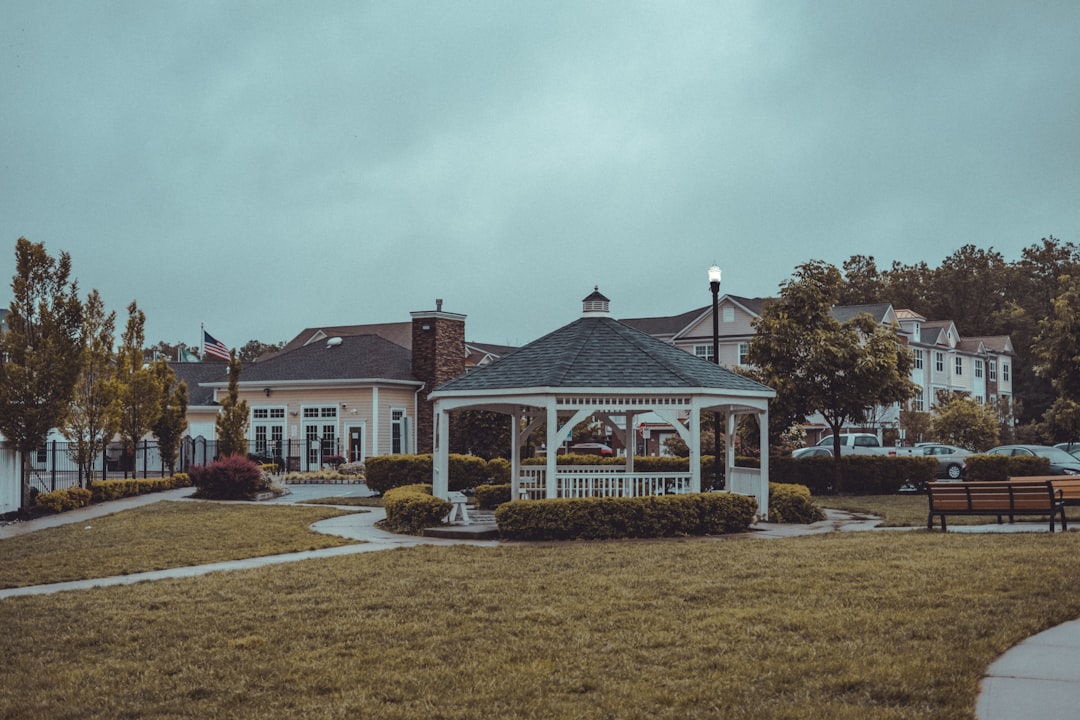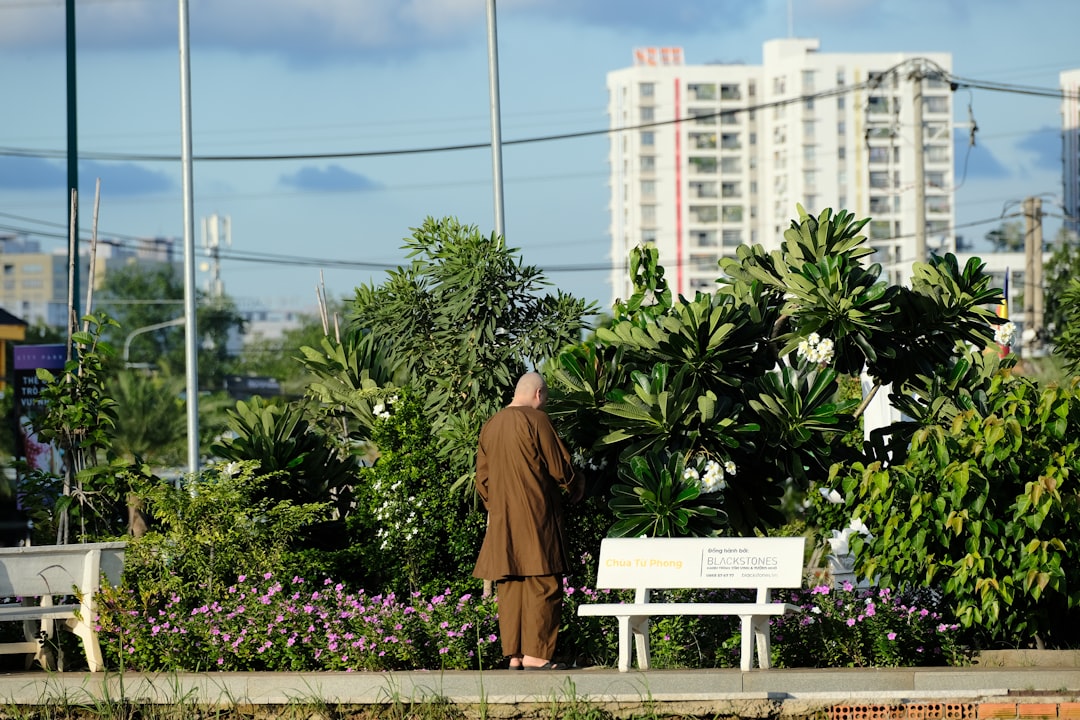

Engage prospects with a scan and streamline customer engagement with FREE QR code marketing tools by Sona – no strings attached!
Create a Free QR CodeFree consultation

No commitment

Engage prospects with a scan and streamline customer engagement with FREE QR code marketing tools by Sona – no strings attached!
Create a Free QR CodeFree consultation

No commitment
For retirement homes navigating the evolving landscape of senior care, gathering meaningful feedback from residents and families presents a persistent challenge. High-value insights often go missing due to outdated collection methods, such as paper surveys and suggestion boxes, which frequently result in low participation, delayed action, and missed opportunities to enhance quality of life. The inability to capture input at the right moment leads to frustration for both management and residents and undermines efforts to adapt services in real time.
As more seniors and families become comfortable with digital channels, modern approaches are required to bridge offline touchpoints and online data. QR codes offer a compelling solution, making it easy and frictionless to share opinions the moment an experience occurs. This capability empowers residents, family members, and staff to turn fleeting impressions into valuable feedback, which can be surfaced and acted upon much more quickly than through traditional means.
By placing smart QR codes in strategic locations, retirement homes simplify the act of giving feedback and gain visibility into otherwise anonymous engagement. This enables leadership to discover trends, address issues proactively, and demonstrate a commitment to continuous improvement. A responsive approach not only boosts satisfaction among current residents but also reassures prospective families that their loved ones’ voices will be heard and valued. Explore practical ideas in senior care QR ideas.

Retirement homes often find that manual, paper-based feedback systems suffer from delays and low engagement, which means that key insights from residents and families never reach decision-makers. The gap between when an issue is noticed and when it is reported can allow minor frustration to become persistent dissatisfaction, sometimes resulting in lost referrals or a weakened reputation within the community. QR codes reduce that lag by giving people a simple way to respond in the moment, right where the experience occurs.
QR codes bridge this gap by transforming everyday moments into opportunities for instant feedback, seamlessly connecting the physical environment with a digital feedback platform. A single scan can take a resident or family member to a Google Forms QR short survey, a maintenance ticket form, or a compliment channel for staff recognition. That immediacy encourages participation, shortens issue-resolution times, and provides leadership with a more complete view of life inside the community.
For example, a retirement community that had traditionally received sparse, often anonymous comment cards saw a major uptick in engagement, capturing more than five times as many actionable responses in the first month after enabling QR-based feedback. Because scans were tagged by location and time, the team quickly discovered specific meal service bottlenecks and corrected them within days, not months.

Retirement homes face unique obstacles in capturing and acting on feedback, from varying resident tech proficiency to missed opportunities when input is not collected in the moment. Families and residents often have suggestions during visits, activities, or meals, but follow-through is rare once they leave the building or move on to the next activity. Without simple, immediate pathways to share those impressions, critical signals around service quality or engagement can be overlooked.
QR codes address these challenges by providing a fast and familiar entry point to digital forms, surveys, and contact options. They work without requiring app downloads or credentials, which reduces friction for seniors and visitors alike. QR codes also bring transparency to historically opaque processes by providing scan and completion metrics that leadership teams can analyze and act upon.
In practice, QR codes printed on appointment cards, event flyers, visitor badges, and even dining receipts have helped communities capture timely insights, reduce response times, and document improvements. When paired with an analytics platform like Sona QR, teams can see the full picture from scan to action and use those insights to continuously raise the standard of care.

Retirement homes serve residents, families, prospective residents, and staff, each with different information needs. QR codes can be configured in multiple formats to match those needs, turning routine materials into gateways for action. By choosing the right format and destination, you make it easier for people to complete tasks quickly and accurately, while generating data that informs smarter decision-making.
The most useful formats in senior living center on short forms and contact options, since these are the easiest and most common actions for residents and families. Dynamic QR codes are especially valuable because they allow teams to update links without reprinting materials, simplifying seasonal or program-specific campaigns.
Dynamic QR formats are ideal when priorities shift, such as moving from wellness screenings to winter weather alert sign-ups. Static QR codes still have a place for evergreen content like the main feedback form or the staff directory, but dynamic options offer greater control and long-term savings.

Many retirement homes lack visibility into where residents or families drop off in the feedback journey. The most strategic opportunities tend to be moments when emotions run high or satisfaction can change quickly, such as after a meal, after a maintenance visit, or during a tour. QR codes placed at those touchpoints meet people where they are, helping you capture context and sentiment before details fade.
To build momentum, start with a handful of high-traffic locations and gradually expand. Use scan data to confirm which settings generate the richest insights, and adjust until each area performs reliably. Clear instructions and gentle prompts ensure even less tech-savvy participants feel comfortable taking part.
Instructional signage should be clear and compassionate. Include a line such as “Scan to share feedback in under 60 seconds” and, where helpful, an alternative short URL for those who prefer typing.

Traditional channels like comment cards and phone hotlines tend to underperform in senior living because they rely on delayed recall or extended effort. QR-enabled workflows make feedback and service requests simple, immediate, and specific, which increases participation and the quality of data.
Focus on use cases that align with your top priorities. For many communities, these include dining satisfaction, timely maintenance, staff recognition, program planning, safety, and family engagement. Each use case can be measured through participation rates, resolution times, and outcome metrics such as satisfaction scores or referral volume.
You can measure success by tracking scan volume, form completion rate, median time to resolution, sentiment trends, and the impact on retention or referrals. Over time, these programs shift your culture toward proactive improvement and data-backed decisions.
Every QR scan is a signal of intent, context, and need. Retirement homes that assign unique codes to different touchpoints can segment audiences automatically, then personalize follow-up for residents, families, prospects, and staff. This approach turns anonymous interactions into meaningful relationships and helps your team prioritize outreach where it matters most.
Segmentation is especially powerful during the family decision-making process, which often spans weeks or months. A prospect might scan a code on a brochure to request pricing, then scan another during a tour to explore calendar activities, and later scan a direct mail piece to RSVP for an open house. Each scan creates a behavioral breadcrumb that your CRM can use to guide the next best step. For tactics, see Sona’s Playbook Intent-Driven Retargeting.
By integrating QR data into your CRM, you can nurture engagement across the resident lifecycle, identify prospects earlier, and route urgent concerns to the right team within minutes.
Disjointed communication creates friction for both families and residents. QR codes function as connectors across print, on-site signage, events, and digital channels, enabling people to move from curiosity to action in seconds. When you manage all codes and destinations in a centralized platform like Sona QR, you gain visibility into what is working and can recalibrate in real time. Consider adding QR codes to digital signage for on-the-spot engagement.
In senior living, print collateral and on-site signage are especially influential. By adding QR codes to these materials, you make them measurable and interactive. Combine scan data with email engagement and web analytics to understand the full journey, from first impression to move-in and beyond.
QR codes unify touchpoints that were previously difficult to measure. With Sona QR, you can manage links, monitor scan performance, and sync engagement data to your CRM and ad platforms for timely, personalized follow-up.
Without an organized process, QR feedback initiatives may struggle to gain traction, leading to low adoption and incomplete data. A structured checklist keeps your program focused on outcomes, minimizes friction for participants, and ensures that internal teams know how to respond to the insights you collect.
Use the following steps to plan, launch, and optimize your QR-based feedback program. Adapt the examples to your community’s needs and current communication stack, and lean on Sona QR’s templates and analytics to accelerate learning.
A disciplined approach creates a repeatable playbook your team can use for new feedback programs, seasonal campaigns, and resident communications. Over time, these habits compound into faster improvements and stronger relationships. Start creating QR codes for free.
Retirement homes often struggle to connect feedback to outcomes, making it difficult to justify investments in engagement programs. Manual methods rarely provide reliable data on participation, resolution times, or the impact on satisfaction and retention. QR-enabled analytics change that by bringing attribution and measurement to previously opaque processes.
With the right tools, you can see how feedback affects satisfaction, retention, referrals, and even occupancy. Scan data combined with form completions, issue resolution logs, and CRM records provides a line of sight from moment-of-truth interactions to business results. For strategy, see Sona’s blog post The Essential Guide to Offline Attribution: Maximizing ROI Through Offline Channels. Sona is an AI-powered marketing platform that turns first-party data into revenue through automated attribution, data activation, and workflow orchestration. Sona QR and Sona.com streamline this by capturing real-world engagement and linking it to contacts, journeys, and outcomes.
A data-driven approach turns QR codes into a performance lever. Sona QR captures the engagement, while Sona.com connects scans to multichannel journeys and revenue-related outcomes, giving leadership confidence that feedback investments are generating real value.
Even strong QR deployments can stall without continuous improvement and staff buy-in. Expanding impact requires better tagging, smarter follow-up, and creative placements that keep participation high. Focus on tips that reduce friction for seniors, respect privacy, and leverage your existing marketing and operations stack.
Consider building a monthly optimization cadence led by a cross-functional team that reviews scan data, shares resident stories, and celebrates improvements. Visible progress signals that feedback is taken seriously, which increases participation and trust.
Automation and analytics ensure that feedback signals are captured and acted on immediately. Over time, these habits strengthen culture, improve care, and contribute to a more transparent and satisfying resident experience.
Senior living is undergoing rapid digital transformation as families expect faster communication, transparent operations, and consistent quality. Physical-to-digital gaps persist though, especially at moments that matter most, like post-meal satisfaction or move-in day concerns. Paper surveys and voicemail lines cannot keep pace with the speed at which impressions form and fade, which leads to missed opportunities to delight residents and reassure families. Many operators are adapting for the boomer generation, making QR-enabled touchpoints a priority.
Cost pressures sometimes encourage operators to continue manual processes, but the hidden costs of slow feedback are significant. Unresolved issues, delayed improvements, and preventable dissatisfaction can reduce occupancy and increase turnover. QR-based systems offer a low-investment path to scalable, measurable engagement. With planning, staff training, and iterative refinement, communities can deploy QR codes that turn everyday touchpoints into data-rich moments of action. See additional use cases tailored to care settings in QR in care homes.
Privacy and compliance must remain central. Permission-based QR programs, transparent disclosures, and secure data practices protect residents and families while allowing teams to learn and improve. Use anonymized surveys for sensitive topics, enforce least-access principles for staff dashboards, and coordinate with legal to ensure alignment with HIPAA and other elder care guidelines.
Communities that embrace data-driven, QR-enabled feedback demonstrate responsiveness and care. By placing QR codes thoughtfully at every significant physical and digital touchpoint, you turn each interaction into an opportunity to learn and improve. When connected to CRM integration, segmentation, and analytics through platforms like Sona QR and Sona.com, these programs reduce lost signals, accelerate resolution, and build a more unified, trustworthy resident journey. The result is stronger relationships, a better reputation in the market, and a care environment that reflects the real needs and voices of those you serve.
QR codes have revolutionized feedback collection in retirement homes, transforming a traditionally slow and cumbersome process into an efficient, engaging, and insightful experience. By enabling residents and their families to share their thoughts instantly and effortlessly, QR codes help retirement communities enhance care quality, improve satisfaction, and foster stronger relationships. Imagine having real-time access to honest feedback that empowers your team to address concerns promptly and tailor services to residents’ unique needs.
With Sona QR, retirement homes can create dynamic, trackable QR codes in seconds, update feedback campaigns without reprinting materials, and analyze scan data to identify trends and opportunities for improvement. This seamless integration turns every feedback moment into actionable insights that drive better resident experiences and operational excellence.
Start for free with Sona QR today and transform how your retirement home listens, learns, and leads toward exceptional care.
QR codes enable residents, families, and staff to provide immediate, easy feedback by linking physical touchpoints to digital surveys or forms, increasing participation and allowing leadership to act quickly on insights.
Common QR code formats include web links to surveys, vCards for contact information, SMS or email templates for quick requests, Wi-Fi access codes, and app download links, with dynamic codes allowing updates without reprinting.
High-traffic and emotionally significant locations such as dining rooms, activity centers, resident apartments, front desks, reception areas, and direct mail materials are ideal for QR code placement.
Dynamic QR codes allow retirement homes to change destination links without reprinting, enable tracking and analytics, and support seasonal or campaign-specific content updates.
Effectiveness can be measured by tracking scan volume, form completion rates, response times, sentiment trends, and correlating feedback with resident satisfaction, retention, and referral metrics.
They should define clear goals, select appropriate QR code types, design accessible codes with clear calls to action, strategically deploy codes in key locations, train staff, and continuously track and optimize based on analytics.
By using unique QR codes for each audience, retirement homes can segment feedback, tailor surveys and follow-ups, and personalize communication to better meet each group's needs.
Use cases include collecting meal feedback, submitting maintenance requests, recognizing staff, gathering family visit impressions, and supporting move-in orientation surveys.
QR code programs use anonymized surveys for sensitive topics, permission-based forms for identifiable data, clear disclosures, secure data systems, and align with HIPAA and elder care guidelines.
Integration enables automated follow-ups, behavioral segmentation, personalized outreach, faster issue resolution, and improved tracking of resident journeys and marketing effectiveness.
Traditional methods like paper surveys and suggestion boxes often result in low participation, delayed feedback, missed opportunities to act, and frustration for residents and management.
Ongoing optimization, staff training, and creative placements keep participation high, reduce friction for seniors, build trust, and ensure feedback leads to meaningful improvements.
QR codes capture feedback in the moment, reducing lag time between issue occurrence and reporting, which allows faster resolution and prevents minor frustrations from escalating.
QR codes connect print, on-site signage, events, and digital channels, making materials interactive and measurable, and enabling seamless transitions from interest to action.
By placing QR codes on table tents or tray labels, residents can quickly provide feedback on meals, enabling rapid menu adjustments and service improvements.
Use Sona QR's trackable codes to improve customer acquisition and engagement today.
Create Your FREE Trackable QR Code in SecondsJoin results-focused teams combining Sona Platform automation with advanced Google Ads strategies to scale lead generation

Connect your existing CRM

Free Account Enrichment

No setup fees
No commitment required

Free consultation

Get a custom Google Ads roadmap for your business






Launch campaigns that generate qualified leads in 30 days or less.
